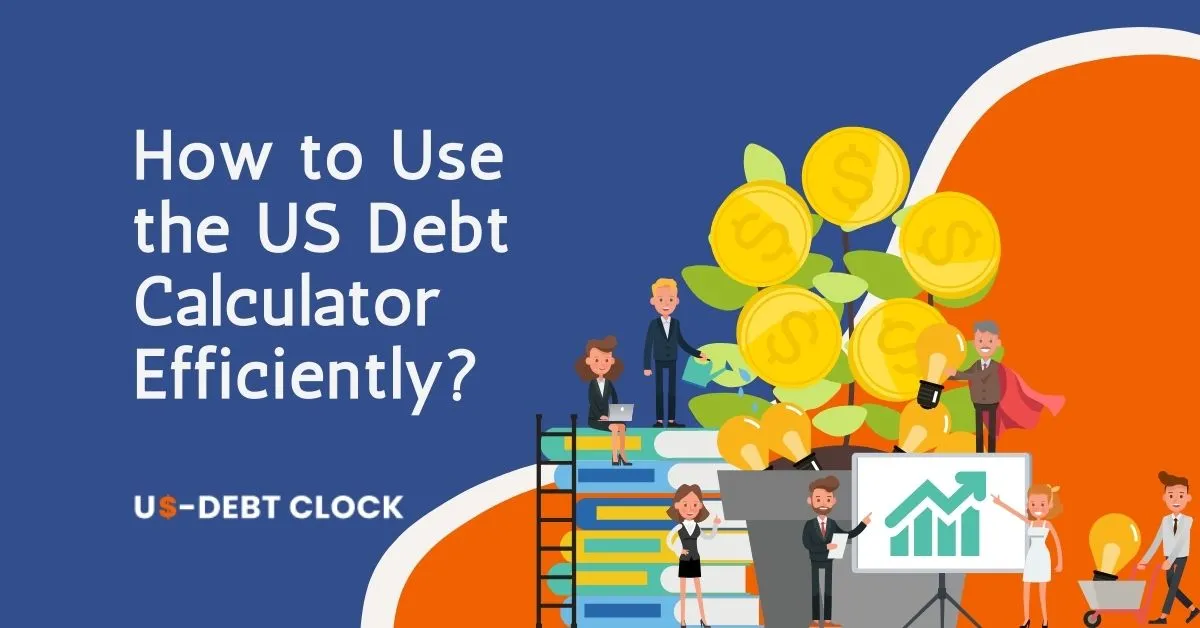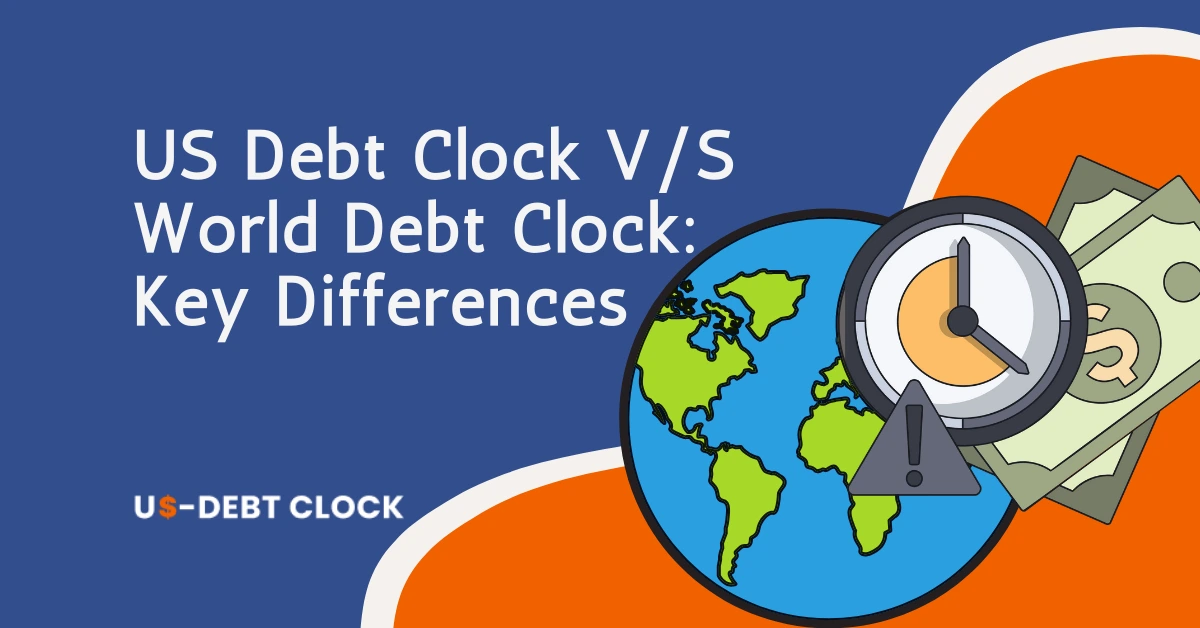The U.S. Debt Clock is an internet site that offers a detailed analysis of the federal government's finances.
It not only reveals the national debt as a total, but also the budget deficit of the government, spending and revenue numbers, debt per citizen and taxpayer, and future liabilities resting upon programs such as Social Security and Medicare.
What does the U.S. Debt Clock Represent?
The U.S. Debt Clock is a real-time ticker of government debt and broader economic data. While its most highly publicized feature is the national debt, it also includes useful statistics such as the government's revenue, spending, deficit, and debt-to-GDP.
These numbers reflect commitments made by the federal government that are not completely paid for through existing revenue streams. The rate at which these numbers increase indicates how rapidly financial commitments can escalate when spending regularly outpaces revenue.
Why National Debt Affects Everyday Finances?
Although it is easy to view national debt as a government problem with minimal personal effect, the reality is far from that.
The government sells Treasury bonds to fund deficits. As there is more debt and investor confidence is stretched, the government may have to provide a larger payment on the bonds to attract investors. Those higher yields spread out to drive up borrowing costs for consumers and businesses.
Mortgages, car loans, credit card debt, and student loans all cost more, directly affecting monthly budgets and financial planning choices.
A second main effect of rising debt is inflation. When government spending is financed by printing more money or maintaining artificially low interest rates, the addition of more money in circulation can cause a decrease in the value of the dollar.
With a weaker dollar, prices rise, and consumers pay more for everyday goods and services.
Inflation, if not checked, can erode savings and decrease the real value of fixed incomes over time, forcing people to rethink long-term financial plans.
In addition, taxes are most likely to take the hit given a rise in the debt ratio. As payment for interest debt escalates, coupled with the burden to continue maintaining the funding for fundamental services, taxation receipts should also be brought forth by this government.
These would pinch disposable income and render saving, investment, or payment for necessary expenses harder.
The Future of Social Security and Medicare
Social Security and Medicare are two of the largest chunks of federal spending and the backbone of retirement planning for most Americans. But as the U.S. Debt Clock shows, the difference between revenue generated and promises being made in these programs is growing exponentially.
These programs were set up when folks had shorter life spans, and more people worked to support every retiree. Now that more people live longer life spans and fewer workers are supporting every retiree, the math has gotten implausible without reform.
If current trends continue, the Social Security and Medicare trust funds will be exhausted in a decade or two. Then, benefits would have to be reduced unless other sources of income are discovered.
Even though reforms will be implemented gradually so as not to affect current retirees, future beneficiaries are likely to undergo significant alterations. Planning for retirement today has to consider the realistic possibility that these programs may not be as generous as they are currently.
Different Generations, Different Impacts
Young working adults today typically have large student loan debts, high housing costs, and less access to credit. As a result of increased interest rates and inflation cutting into real wages, it is harder for them to build up assets, save for the future, or make large purchases. Their financial decisions are fewer, and the long-term implications of delayed investing and homeownership can plague them for years.
Middle-class households have their own set of challenges. It becomes increasingly difficult to juggle the cost of kids, health care, education, and retirement savings as the costs are increasing faster than income.
Due to increased interest rates and inflation, each dollar of income doesn't stretch as far as it used to in the past. Middle-class households are also directly impacted by tax increases, making it even more difficult to build a financial cushion or save for future milestones.
Even retirees, who may believe they are shielded, are not secure. Many individuals rely on fixed incomes derived from Social Security, pensions, or savings, all of which can diminish due to inflation.
Adding to that are concerns about the future of Medicare or rising health care costs, which can mean even more financial stress. For those who have already retired, with less flexibility, it becomes more difficult to adjust to evolving economic conditions.
In an uncertain economy, consumer demand may slow down, and it gets tougher for small businesses to grow or even survive. The eventual long term effect is less innovation and the establishment of fewer new jobs, impacts that have a ripple effect on the overall economy.
What Can Individuals Do?
Though people cannot directly influence government policy, there are proactive measures they can take in anticipation of national debt hitting their bottom lines.
An emergency fund covering at least three to six months of living costs will provide a cushion against the types of shocks that accompany job loss or surprise medical expenses.
Having money available in case of uncertainty reduces the need to utilize high cost debt.
Investment in other assets is another crucial diversification strategy. When there is high inflation or increasing interest rates, the savings account returns might not outperform the average inflation rate.
Risk will be managed more in such an economically volatile state through a balanced strategy of investment.
It is also wise to reduce high-interest debt. It becomes more expensive to carry credit card balances or other variable-rate debt as rates go up.
Paying down this type of debt not only reduces monthly outlays but also increases overall financial flexibility. This makes it easier to respond to future economic changes or unforeseen expenses.
Tax planning is something individuals can do as well. Investments in tax-deferred vehicles like Roth IRAs, traditional 401(k)s, and Health Savings Accounts (HSAs) can reduce taxable income while having the potential for long-term growth.
They also work to reduce future tax rate increases because they are set to grow tax-deferred or tax-free, respectively, depending on the type of account.
Last but not least, being vigilant and engaged counts. Being aware of how the national debt affects your finances can ensure smarter decision-making.
Encouraging proponents of responsible budgets and sustainable programs reform helps secure long-term fiscal soundness.
Conclusion: Managing What You Can Control
The U.S. Debt Clock serves as a visual representation of the continuous increase in national debt. While people cannot control the federal budget or spending levels, they can make smart choices to reduce the individual impact of general economic trends.
Rising interest rates, inflation, and potential shifts in taxes all present challenges, but with smart planning and proactive management, it is possible to weather them successfully.
By building savings, eliminating debt, investing wisely, and planning taxes, people can build their economic strength, even while national debt levels rise ever higher.



